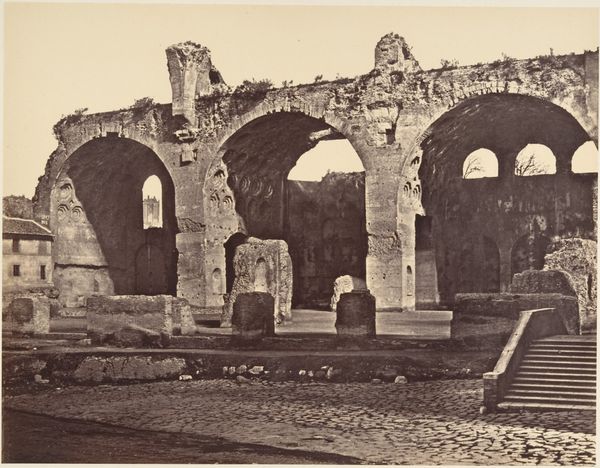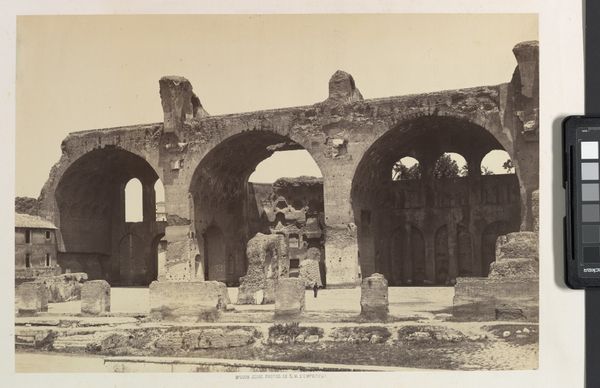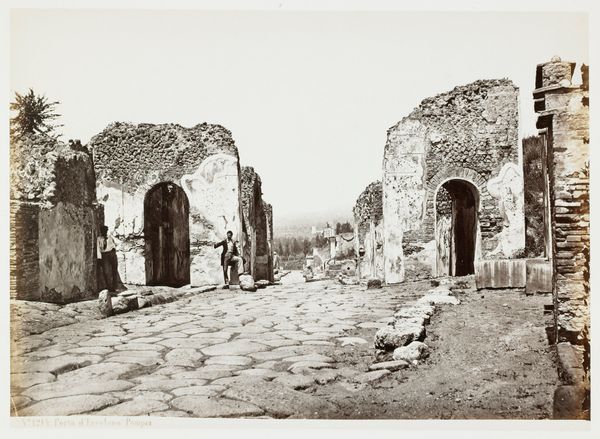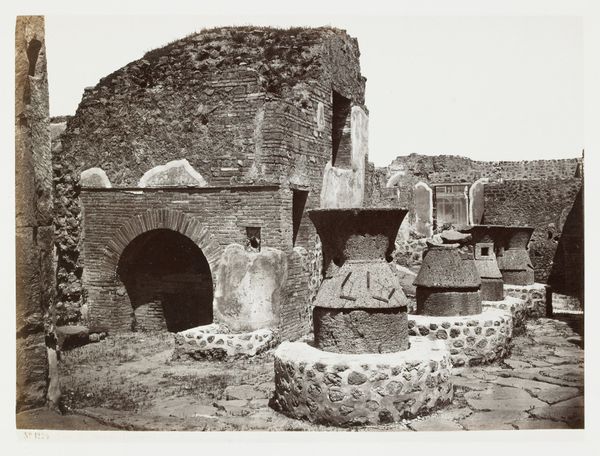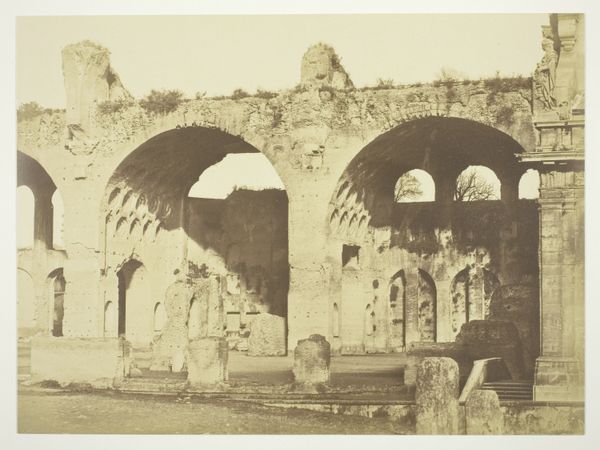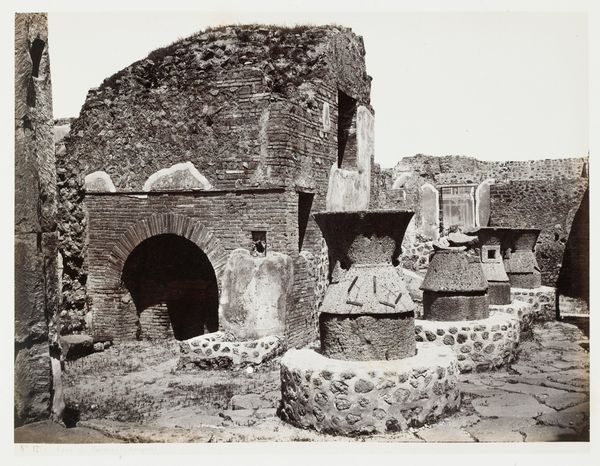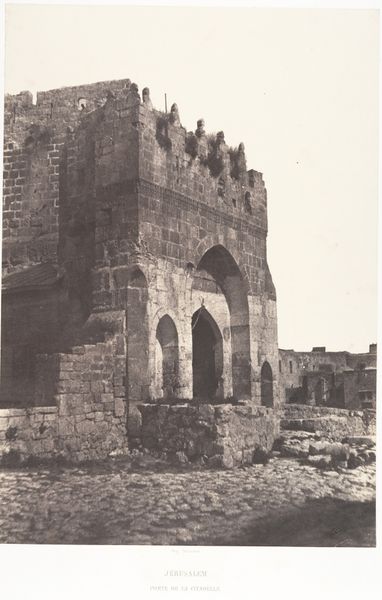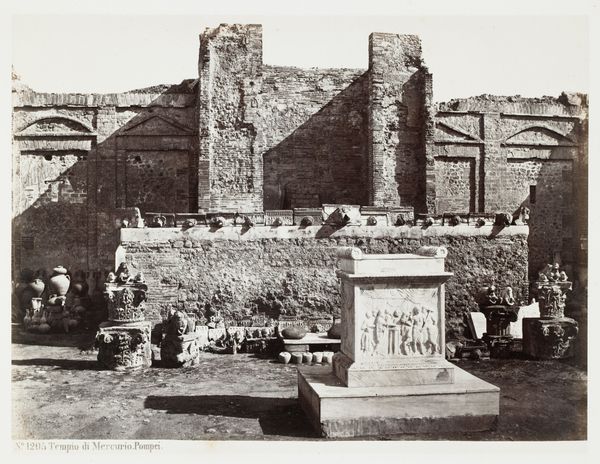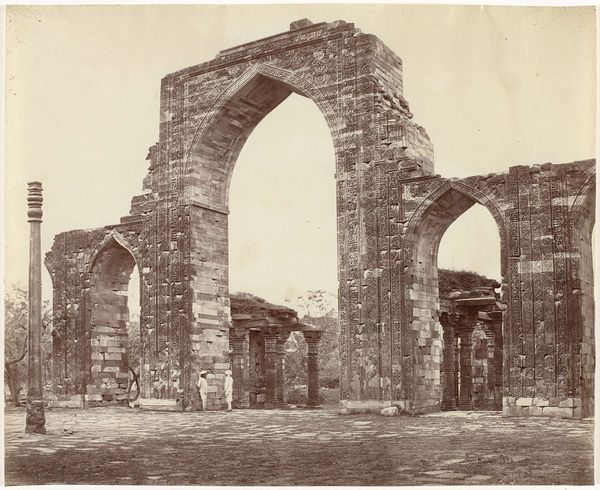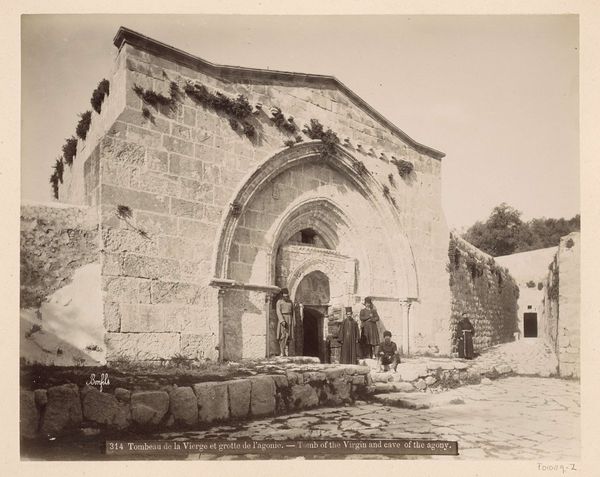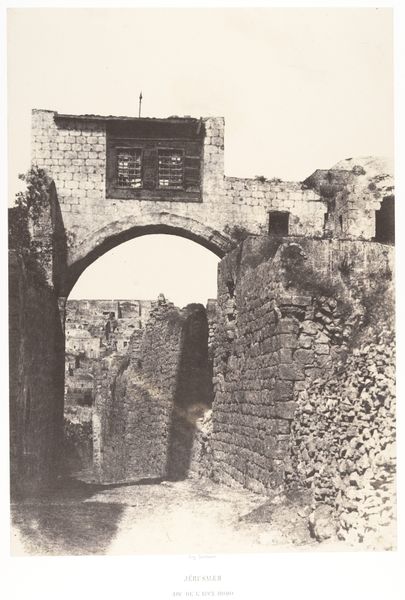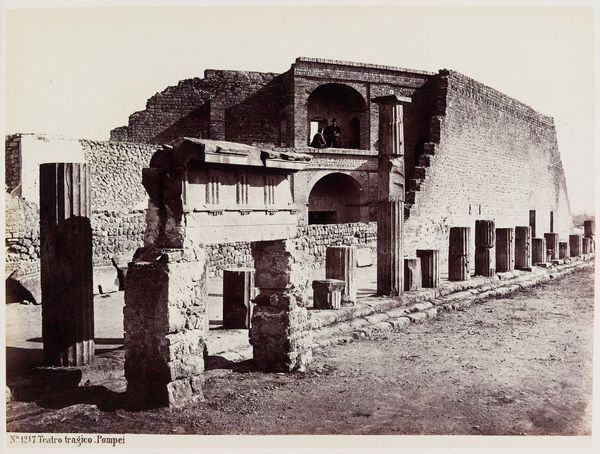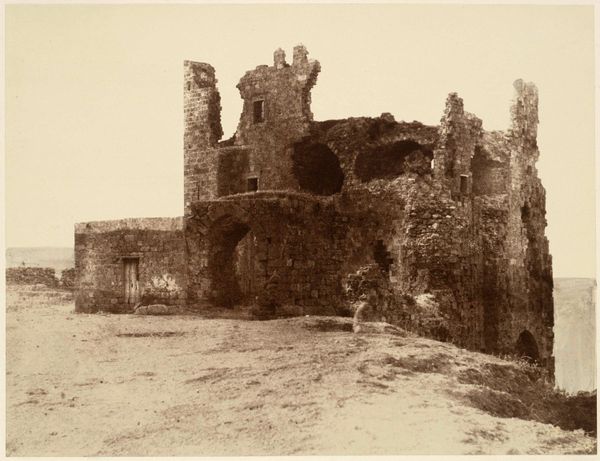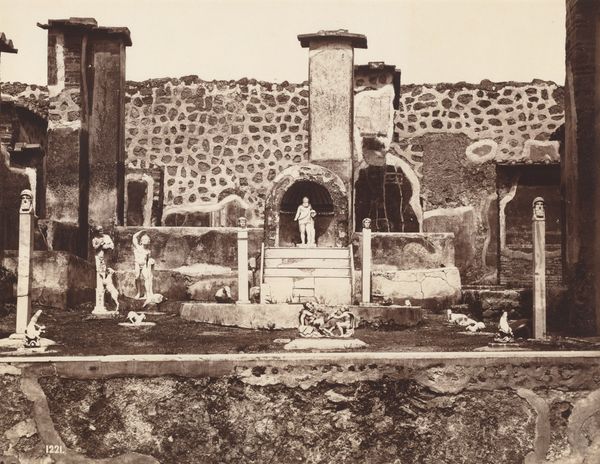
photography, site-specific, gelatin-silver-print, architecture
#
landscape
#
photography
#
historical photography
#
ancient-mediterranean
#
site-specific
#
gelatin-silver-print
#
history-painting
#
architecture
#
realism
Dimensions: height 361 mm, width 447 mm, height 552 mm, width 718 mm
Copyright: Rijks Museum: Open Domain
Editor: This gelatin-silver print by Bisson Frères, taken between 1858 and 1863, is called “The Basilica of Constantine in Rome”. It has an austere feel to it. What structural elements stand out to you? Curator: The photographer meticulously captures the basilica's architectural details through a focus on its form. Consider the strategic deployment of light and shadow; this amplifies the monumentality and spatial depth. The rhythmic repetition of the arches leads the eye, structuring the visual field. Editor: It's interesting how the eye is drawn to specific points because of that repetition. What about the materiality? How does that play into it? Curator: The photographic medium itself, with its capacity to render texture and tone, emphasizes the ruinous state of the structure, furthering the impact of time. Do you perceive a dialogue between decay and persistence here? Editor: Definitely. The cracked surfaces, the crumbling edges... they tell a story. What does that interplay between the solid architectural forms and their dilapidated condition communicate in terms of semiotics or representation? Curator: Semiotically, the basilica stands as a signifier of past grandeur, but its degradation inflects it with a melancholic aura. It invokes the philosophical themes of transience and memory. The photographer has shaped our encounter through the lens and printing process. What meaning emerges when thinking about how light activates the surfaces and shadows to enhance this drama? Editor: I hadn't thought about the importance of that tension and how it informs meaning before. Thanks! Curator: It is my pleasure. Analyzing art through close observation can bring renewed understanding.
Comments
No comments
Be the first to comment and join the conversation on the ultimate creative platform.
